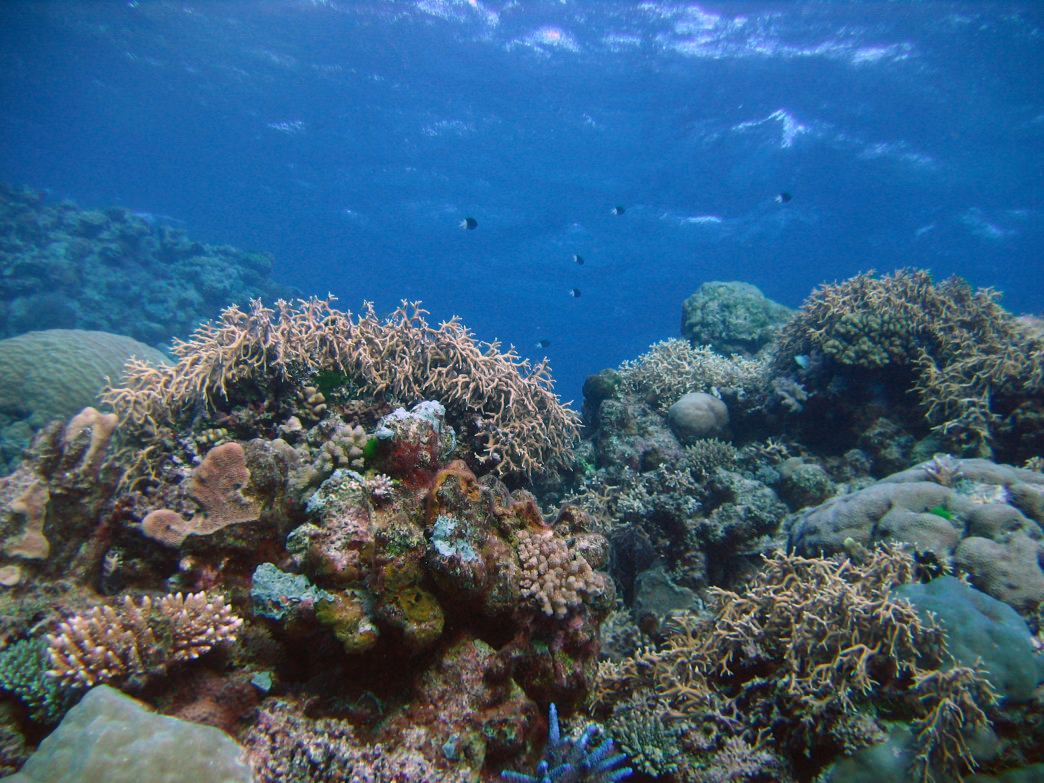The world is a big place full of countless adventures, but unfortunately, we are in danger of losing some of them forever. Whether it’s due to rising ocean temperatures, rising water levels, or melting glaciers, a few of the most amazing destinations on earth are slowly disappearing. If any of these seven adventures are on your bucket list, we suggest moving them up—chances are they’re not going to be around much longer.
1.Snorkel around Australia’s Great Barrier Reef
Covering more than 130,000 square miles, the Great Barrier Reef is the largest structure on the planet made up by living organisms. (You can even see it from space!) Exploring the reef is on just about every snorkeler and diver's bucket list, but unfortunately the reef’s prognosis isn’t good. Scientists recently found that enormous sections (we’re talking hundreds of miles of reef) were dead—a level of destruction they hadn’t expected to see for another three decades. Warming ocean temperatures have bleached some 90 percent of the reef to at least some degree, according to recent studies. Bleached corals can recover, but with water temperatures continuing to rise, it’s unlikely that the reef will make a comeback.
2. Check out glaciers in Patagonia
Few landscapes are more iconic than the jagged Patagonian skyline. Rugged Cerro Fitz Roy and its neighbors are on the bucket lists of countless alpinists, but you don’t have to be a technical climber to appreciate the striking beauty of, say, Torres del Paine National Park. These days, though, the icefield in Patagonia is shrinking rapidly, with one study estimating that its glaciers have been thinning by an average of six feet each year since 2000. Warming air temperatures do cause some melting, but they also mean that what used to be snow is now rain—another factor that contributes to the glaciers’ recession.
3. Find snow at the summit of Kilimanjaro

Dave Bailey
At 19,341 feet, this dormant Tanzanian volcano (which actually has three distinct volcanic cone summits) is the tallest peak in Africa. First climbed in 1889, it attracts thousands of climbers each year, some of whom are seeking to climb the Seven Summits (the tallest points on each continent). Kilimanjaro is part of a national park and has been the subject of countless studies, thanks to its receding glaciers. The rate of glacier shrinkage has doubled since 1970, but they’re not melting. They’re evaporating. Move this one to the top of your list, because some scientists estimate that Kilimanjaro could be ice-free as early as 2022.
4. Hike through the Everglades

Suzanham
With a high point just 345 feet above sea level, Florida is especially vulnerable to rising sea levels, and its beloved national park is no exception. Everglades National Park is the largest wilderness area east of the Mississippi River, and it’s an essential habitat for tons of wildlife, including threatened and endangered species like the West Indian manatee, Florida panther, and American crocodile. As water levels rise, though, it will become increasingly difficult to see the park by land, not to mention the effect of sea level rise on its inhabitants: increased salination in the Everglades has serious detrimental effects on the wildlife.
5. Explore the Amazon rainforest

CIAT/Neil Palmer
The Amazon is the largest rainforest on the planet, covering nearly half of the South American continent. It’s also the quintessential example of biodiversity, since it supports millions of species of insects, birds, mammals, and reptiles. You’ve probably heard that the Amazon is disappearing, thanks in large part to industrialism and the need for increased infrastructure in South America. But it’s not just direct human intervention, like logging or cattle farming, that’s causing the decline. Climate change has caused major droughts in the Amazon, which leaves trees susceptible to die-off on a huge scale. Fewer trees will also up climate change in a very real way: dead trees aren’t capable of soaking up carbon dioxide and producing oxygen.
6. Ski to the North Pole

Christopher Michel
Unlike the South Pole, which is perched atop the Antarctic continent, the North Pole lies in the middle of the Arctic Ocean. Historically, it’s been reachable by human power, since it’s been sitting on a shelf of more or less permanent sea ice. There’s some controversy about who was first to reach the pole, but there may soon be little controversy about the last people to ski it—melting sea ice means we’re unlikely to see many more expeditions. With only freezing arctic water between the pole and the nearest land mass, it will only become more and more difficult to reach the Pole without the aid of machines.
7. See the Easter Island Moai

David Berkowitz
If you’ve heard of the Moai, you probably associate them with their location: they’re the gigantic stone heads on Easter Island. The Rapa Nui people carved these iconic statues sometime between the thirteenth and sixteenth centuries, believing that they held sacred spirits. Amazingly, the statues—which often weighed upwards of 80 tons—were moved around the island using log rollers (the island’s trees have since disappeared), ropes, and often more than 100 people. Today, they’re part of Rapa Nui National Park, but they’re also balancing precariously close to the water, and as ocean levels rise, they’ll one day be underwater.
Originally written by RootsRated for Craghoppers.
Featured image provided by american_rugbier

 Warming ocean temperatures are destroying the Great Barrier Reef.
Warming ocean temperatures are destroying the Great Barrier Reef.